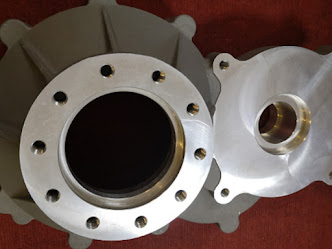Sand Molded Casting is frequently employed in the foundry sector. Sand
casting is a cost-effective and incredibly dependable method for producing
intricate parts and components needing inside cavities, and it is used to
produce the bulk of metal castings. Sand casting enables the design freedom
required to produce extremely complex forms from practically any type of
technical alloy in almost any dimension or weight.
The fact that the completed result depends so strongly
on the quality of the sand casting itself is arguably the biggest disadvantage
of sand casting. When mold can survive the high temperatures of the liquid
metal they contain and when the metal product comes out neatly, the results are
excellent. The final product's quality or usefulness may suffer from flaws in
the sand casting process.
Making a high-quality mold for sand casting
Manufacturers start by designing a reusable pattern with
the same details as the end object they want to build before casting it in the
sand. They incorporate a modest thermal contraction tolerance or the amount the
metal component will contract as it hardens and cools. The pattern also
controls gas venting, metal flow, and thermal contraction while feeding the
required cast design. Patterns may be produced from disposable polystyrene,
wood, metal, synthetics, or other materials according to the required volume
and tolerance. The Green Sand Casting Supplies are
offered by the supplier.
Sand is then poured around the pattern by mold
designers. For the sand to withstand the metal pouring operation; it frequently
incorporates clay, bonding agents, or other ingredients. Designers may carve
the necessary hollow form right out of a block of sand. When product designers
wish to execute or manage changes rapidly and avoid saving patterns, they
frequently machine the sand casting.
The top cope half and the bottom drag half make up the majority of sand-cast mold. Additionally, the mold may have cores that reroute and harden the metal to produce interior features and geometry in the finished item. Workers divide the pieces and take out the design when the sand has dried. The use of a separating substance, such as a refractory wash, aids in the part's appropriate release from the mold by Sand Molded Casting Manufacturer.
Follow us on Twitter







